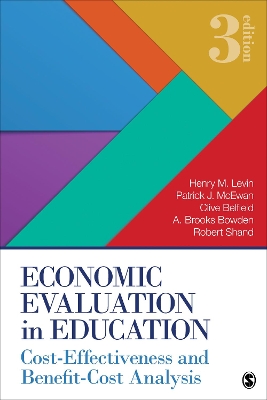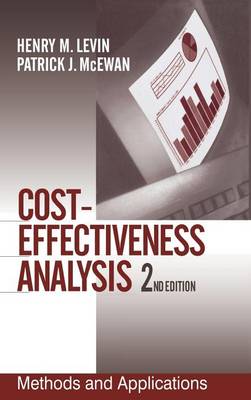New Perspectives on Evaluation
2 total works
Economic Evaluation in Education
by Henry M. Levin, Patrick J. McEwan, Clive R. Belfield, A. Brooks Bowden, and Robert D. Shand
The past decade has seen increased attention to cost-effectiveness and benefit-cost analysis in education as administrators are being asked to accomplish more with the same or even fewer resources, philanthropists are keen to calculate their "return on investment" in social programs, and the general public is increasingly scrutinizing how resources are allocated to schools and colleges.
This text (titled Cost-Effectiveness Analysis in its previous editions) is the only full-length book to provide readers with the step-by-step methods they need to plan and implement a benefit-cost analysis in education. The authors examine a range of issues, including how to identify, measure, and distribute costs; how to measure effectiveness, utility, and benefits; and how to incorporate cost evaluations into the decision-making process. The updates to the Third Edition reflect the considerable methodological development in the evaluation literature, and the greater empiricism practiced by education researchers, to help readers learn to apply more advanced methods to their own analyses.
SAGE congratulates author Henry M. Levin, winner of the 2017 AERA Distinguished Contributions to Research in Education Award.
". . . the presentation is lucid and the examples and math are not taxing. Furthermore, the pedagogical and other improvements in the text are more than marginal; they are major, and make the purchase of this second edition well ′worth it′ even if you have the first."
--EVALUATION AND PROGRAM PLANNING, Vol 26.1
"Listing all of its virtues would be superfluous. Levin and McEwan have produced an excellent resource for teaching, a valuable handbook for practitioners, and a solid guide to research."
--David Plank, COMPARATIVE EDUCATION REVIEW, Feb. 2002
"Every student in evaluation studies and all who aspire to become professional evaluators must have some minimal knowledge of cost-effectiveness. The content of this book should admirably serve that purpose and should be required reading in all programs that prepare professional evaluators both inside and outside the field of education. The purpose of the book is to familiarize the reader with the uses, concepts, and applications of cost-analysis approaches to educational evaluations. Careful attention is given to outlining the development and use of cost-feasibility, cost-effectiveness, cost-benefit, and cost-utility as complimentary techniques for assisting educational decisions."
--Darrell R. Lewis, Educational Policy, University of Minnesota
"Those of you teaching cost analysis and management of human services systems should look carefully at this text. Human services professional managing systems are confronted with the problems of being increasingly more efficient. This text will help you teach those students entering the field about how to conduct analytical studies of their management practices. I award the authors many accolades for an excellent treatment of a very complex topic which is now translated into useable materials for management."
--Jon S. Ebeling, Political Science, California State University, Chico
"Research shows that smaller class sizes generate benefits in the form of higher achievement. But does that mean that reducing class size is a cost-effective policy change? This book by Levin and McEwan provides the analytical tools and concepts for educational policy makers to address that and many other policy questions. It defines and distinguishes various concepts of cost analysis, including cost-effectiveness, cost-benefit and cost-utility analysis, and makes a compelling case for their usefulness to policy makers. The book offers an essential analytical foundation for all policy makers in education interested in spending money wisely and productively."
--Helen F. Ladd, Public Policy Studies & Economics, Duke University
Why should applied researchers be concerned with cost-effectiveness analysis? Answer: Because it will enable them to discover if a particular program or policy has attained maximum effectiveness for a given budget. Designed so that an individual can utilize this book as part of an informal course of self-study or in a formal course on the subject, Levin and McEwan provide readers with the step-by-step methods to plan and implement a cost-analysis study. Through the use of numerous examples drawn from the applied literature, the authors explain, demonstrate and illustrate the four major techniques of cost analysis: cost-effectiveness, cost-benefit, cost-utility, and cost-feasibility. They examine issues that are pertinent to the choice of analysis and its implementation; the nature of costs, including how to identify, measure, and distribute costs; measuring effectiveness, utility, and benefits; and, lastly the challenges to incorporating cost evaluations in the decision making process. In-depth exercises are included at the end of each chapter to enable readers to sharpen their ability to evaluate policy options and program effectiveness. (The feedback to these exercises are provided in an Appendix at the end of the book). The authors also provide readers with recommended readings at the end of chapters and a comprehensive bibliography of methodological sources on cost analysis and educational cost studies at the end of the book. This book will enable readers to reduce the costs of reaching particular objectives, and expand what can be accomplished for any particular budget or resource constraint.

